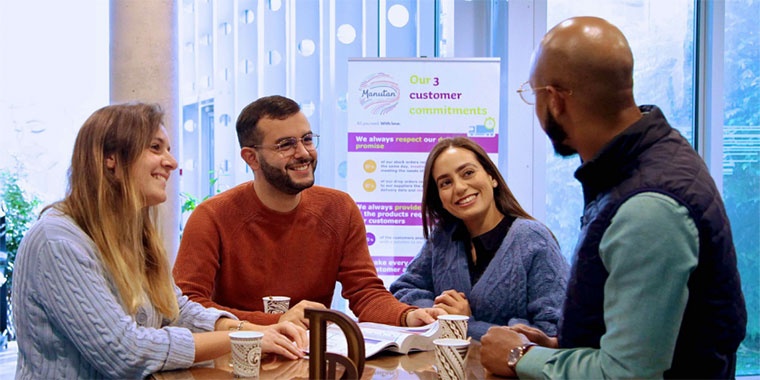
Post-Covid talent retention: what solutions for companies?
The Covid-19 crisis has profoundly transformed the challenges of work for both employers and employees alike. What initiatives should organisations implement to retain their talent and attract new talent, while adapting to these drastic changes in work patterns? Leaders, managers and human resources departments must make remobilising employees a top priority, or risk a brain drain and becoming less attractive.
Changes to how work is organised...
Many challenges relating to how work is organised had been bubbling below the surface for years. The Covid-19 crisis has only accelerated the reflection on and the implementation of new ways of working for jobs that allow it.
Today, as the virus and its new variants return to the forefront, companies must find solutions to match the new expectations of employees and applications, while remaining in step with their companies' needs and challenges.
Employees now have new demands that stem from more convenient routines brought about by working from home. For employees, flexibility, autonomy and a better work-life balance are all priorities.
Companies must therefore strike a balance, i.e. offer a hybrid mode of work including days working from home (if the technology and IT security allow it) in response to issues such as performance, concentration and personal organisation, combined with other days on site, because, above all, companies are a collective endeavour that brings teams together and steer cross-cutting projects.
Reconciling office enthusiasts and sceptics
While some employees have not embraced teleworking and are delighted to be able to return to the office, others don't share their enthusiasm. Many employees are suffering from "cabin fever", i.e. a difficulty reintegrating into the social environment they left behind for a while.
For these people, returning to the office can be a real setback. Indeed, although the successive lockdowns were anxious times, they still brought certain benefits: less time lost commuting, less imposed promiscuity, the rediscovery of a more harmonious rhythm of family life, a more balanced private life, as well as less sleep loss and unprecedented efficiency at work!
The return to "life as usual" has thus been difficult for many. It is up to companies to adapt certain processes, to institute new rituals, to imagine other ways of interacting and meeting by reorganising spaces, because employees must feel just as at ease in the workplace as they do at home.
Also, by enabling brainstorming, teamwork and informal meetings, physical spaces can retain their utility. We mustn't forget that the spontaneous discussions that take place in companies, in the cafeteria, in hallways..., often lead to ideas for projects, connections, common issues: something that was completely lost during the crisis! More than ever, organising events is crucial. The social side of these meetings is essential: we must also reintegrate moments of conviviality if we want employees to come back to the office and re-engage.
Companies have a role to play in supporting managers and giving them the means to co-develop in order to move forward and ensure that these ongoing changes are absorbed as they occur. There is a lot of work to be done by HR and internal communication to ensure that the corporate culture and shared endeavour are transmitted to all employees, at all levels, at all times. Not just when employees are physically at the office. That is where the real challenge lies.
What post-Covid lessons need to be learned to build loyalty, avoid brain drain, and remain attractive?
Companies that point blank refuse to retain some teleworking are running a big risk. Such decisions can cause tension because new habits have become ingrained over the past 18 months. An employer suddenly eliminating telework could be perceived as "unfair" or even as a loss of trust. Employees may feel a lack of recognition for the investment they made during months of teleworking. This could lead to disengagement, loss of motivation and even departures. On the other hand, new applicants now expect a certain amount of teleworking. Failing to offer this mode could make a company less attractive as a potential employer.
Finally, beware of employee hyper-connection when teleworking! Outdoor activities had to be put on hold during lockdown and many employees "worked" to "keep busy". Things are very different now as other areas of life beyond work have resumed. Managers must draw their teams' attention to this issue and set a good example. Whether at home or in the office, breaks are essential. Workstations must be organised; go out for lunch if needs be and follow the same schedule as at the workplace.
Ideally, you should make disconnecting in the evenings and weekends mandatory and not send any emails unless the situation qualifies as "very urgent". Applying a feedback culture will also allow you to spot employees that struggle to disconnect and to discuss issues with him/her more broadly.
Almost two years after teleworking was imposed across the board and our old work routines were turned on their head, more than ever companies must make space for dialogue and be willing to listen to their employees. 74% of them do not want to return to the office "as before - meaning 100%", but they do want a partial return to the office!
It's up to managers to reimagine the daily work routine to keep engagement and productivity intact. Whatever an employee's state of mind, companies must make reasonable decisions and avoid unilateral impositions. By rethinking their working methods, companies can reinvigorate their HR strategies. This could lead to the deployment of new projects: revisiting training courses to make them hybrid and more dynamic, capitalising on easy-to-access online events (webinars, virtual coffee meetings, etc.) and working with managers to reorganise offices to bring groups together.

By Valérie Benoit, Group Human Development Projects Manager
